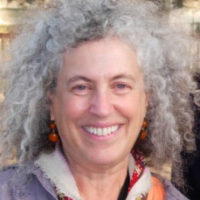Last November, South Dakota voters overturned a state abortion ban by a 12 percent margin. The April 18 Supreme Court anti-abortion ruling shows the court is “farther to the right than these conservative ‘red states’ voters,” says Kathi Di Nicola, media relations director for Planned Parenthood of Minnesota, North Dakota and South Dakota.
Mobilizing for the November referendum, “we engaged clergy and farmers and shopkeepers,” Di Nicola said. “It was a real people’s movement.” Now, following the high court ruling, she said, “We are planning a strong grassroots response in all three states.”
The April 18 decision upheld a federal law, passed by the Republican-controlled Congress and signed by President Bush in 2003, which bans vaguely defined abortion procedures used in the second three months of pregnancy. The ban will take full effect four to six weeks from the date of the ruling — mid-May to early June.
The ruling “shifts medical decisions away from women and their doctor to the government,” National Women’s Law Center attorney Gretchen Borchelt told the World.
The main immediate impact, she said, is that the Supreme Court, for the first time, has endorsed prohibition of a medically approved procedure with no exception when women’s health, or fetal health, is at risk.
The federal ban will apply to every state, even if they have laws protecting such procedures, Borchelt said. Moreover, the ruling’s language does not correspond to any actual medical terminology, so it is likely to trigger fears by medical providers about carrying out any type of second-trimester abortion, she said.
The ban and the court decision focus on “partial-birth abortion,” a non-medical label coined by anti-reproductive-rights groups. In fact, medical professionals say, second-trimester abortion procedures, used in a tiny percentage of all abortions, usually involve cases of severe medical complications or fetal abnormalities.
The April 18 decision “undermines the core of Roe v. Wade,” Borchelt said, referring to the landmark 1973 ruling that the U.S. Constitution protects the right to decide whether or not to terminate a pregnancy, based on the right to privacy.
“It basically declares open season on rights women have relied on for three decades,” she said.
The decision also endorsed the long-discredited notion that women are unable to make rational decisions for themselves, Borchelt noted.
Last fall in South Dakota, “we ignited a conversation about the level of government intrusion” into women’s lives,” Di Nicola said in a phone interview from her Minneapolis office. “I think people are deeply disturbed by this invasion of privacy.”
This February, another anti-abortion measure passed South Dakota’s state House but was killed in the Senate “through grassroots efforts,” Elaine Roberts, a co-chair of South Dakota Campaign for Healthy Families, said. The Supreme Court decision now “adds fuel to a flame that had maybe slowed down a little.”
The South Dakota Campaign for Healthy Families is a coalition of individuals and groups from across the state — Planned Parenthood among them — spanning both political parties, and including ministers, doctors and nurses. Its co-chairs include the leader of the largest Native American tribe, Cecelia Fire Thunder of the Pine Ridge Oglala Sioux.
The coalition will be waging a “strong organizing effort” to “oppose interference of the government in private medical decisions,” said Roberts. “We are not sitting around waiting for something to happen.”
Di Nicola said Planned Parenthood is planning grassroots education, organizing and legislative action. Coming up is South Dakota’s third annual women’s day at the state Legislature, June 30, she said, and student reproductive rights activists in the state are planning a September “summit” to train campus organizers.
The power of the federal abortion ban to override state protections underscores the significance of congressional action to restore and guarantee reproductive rights. The just re-introduced Freedom of Choice Act would “preserve women’s rights as Roe intended,” Borchelt said. At the same time, she noted, the Supreme Court ruling will spur drives for more restrictions and new kinds of restrictions at the state level. Such moves are already happening in several states. Thus, women’s rights and health advocates say, organizing at both state and national levels is essential.
Roberts, a former South Dakota state legislator, called the Supreme Court ruling a reflection of the political landscape over the last few decades. She commented, “We don’t pay a lot of attention to who’s being appointed. Then we wake up and say ‘Oh my, what’s going on?’”
The ruling “has gotten people’s attention,” said Di Nicola. She added, “We are seeing why elections matter.”
suewebb @pww.org










